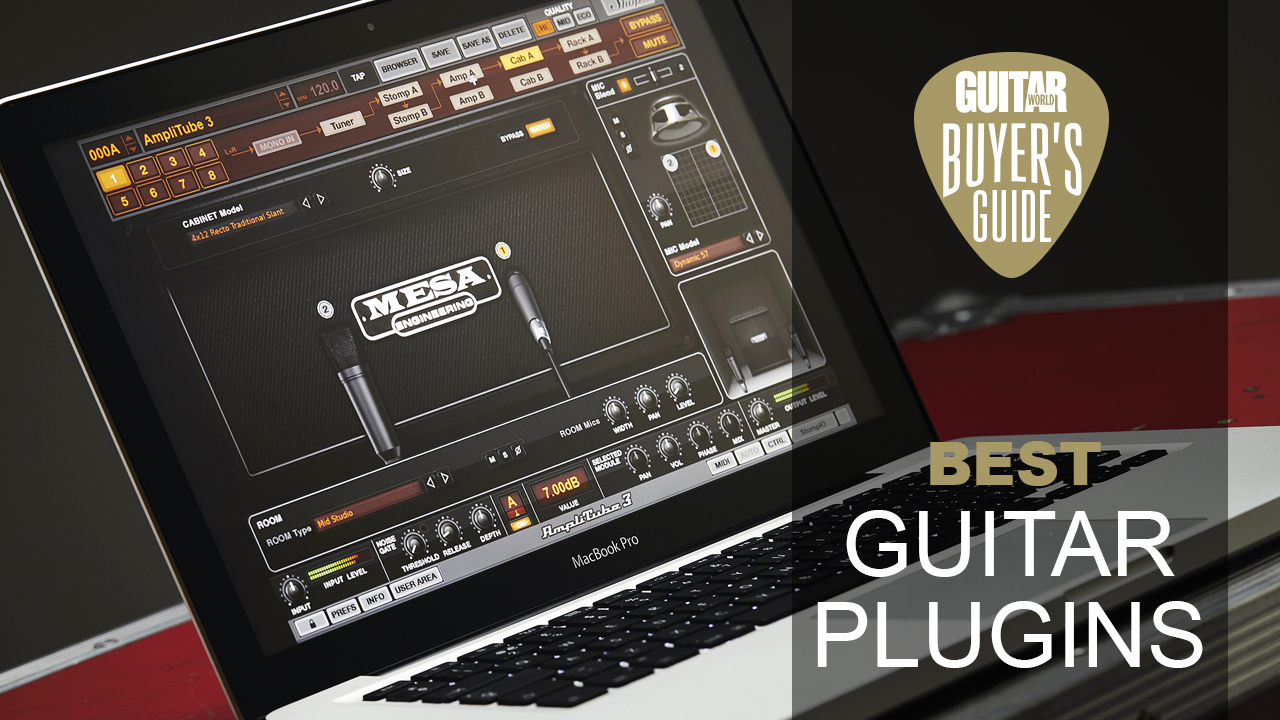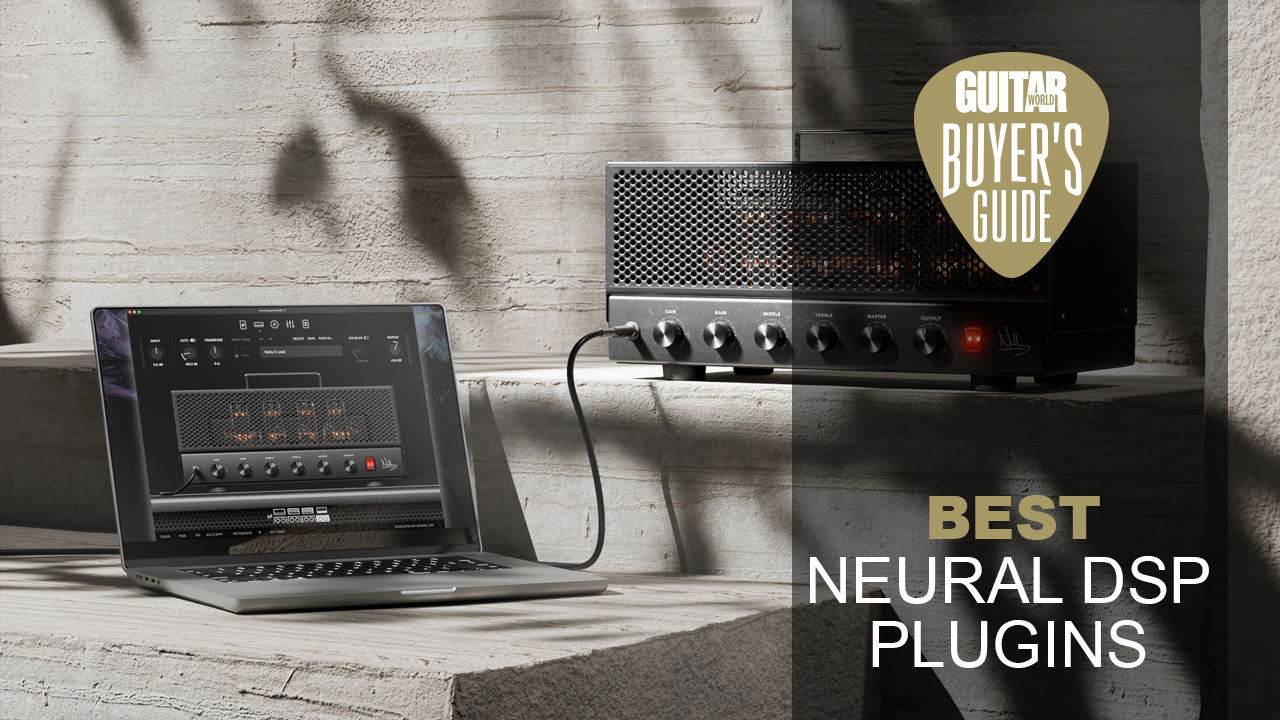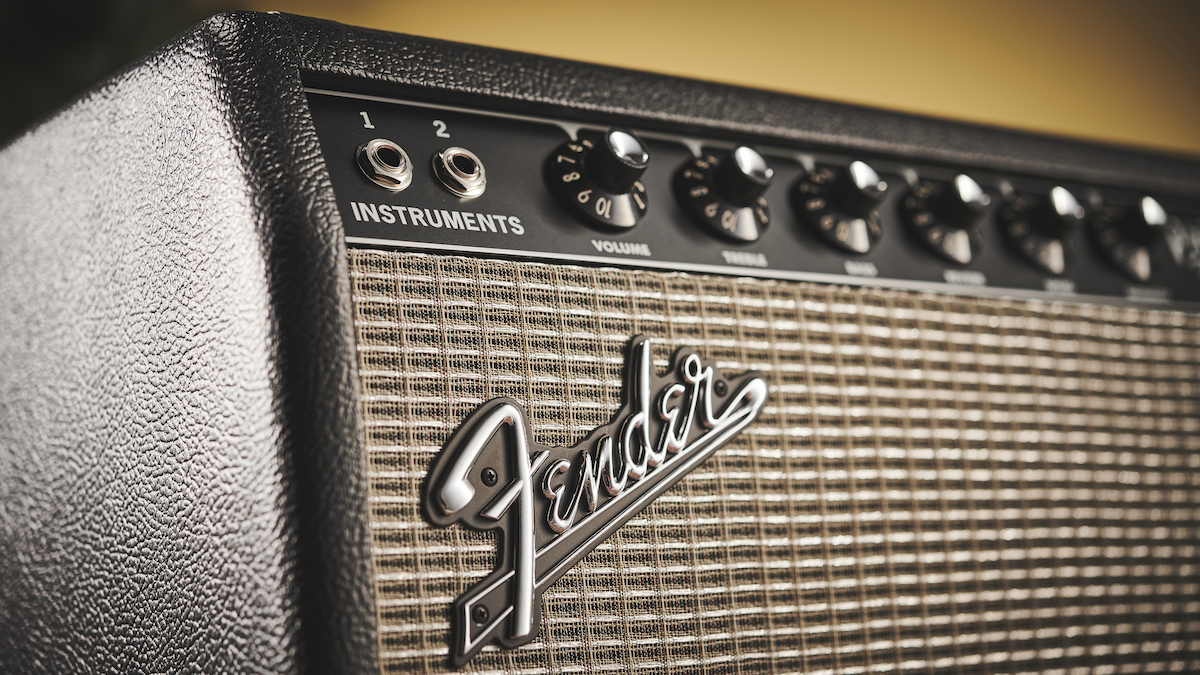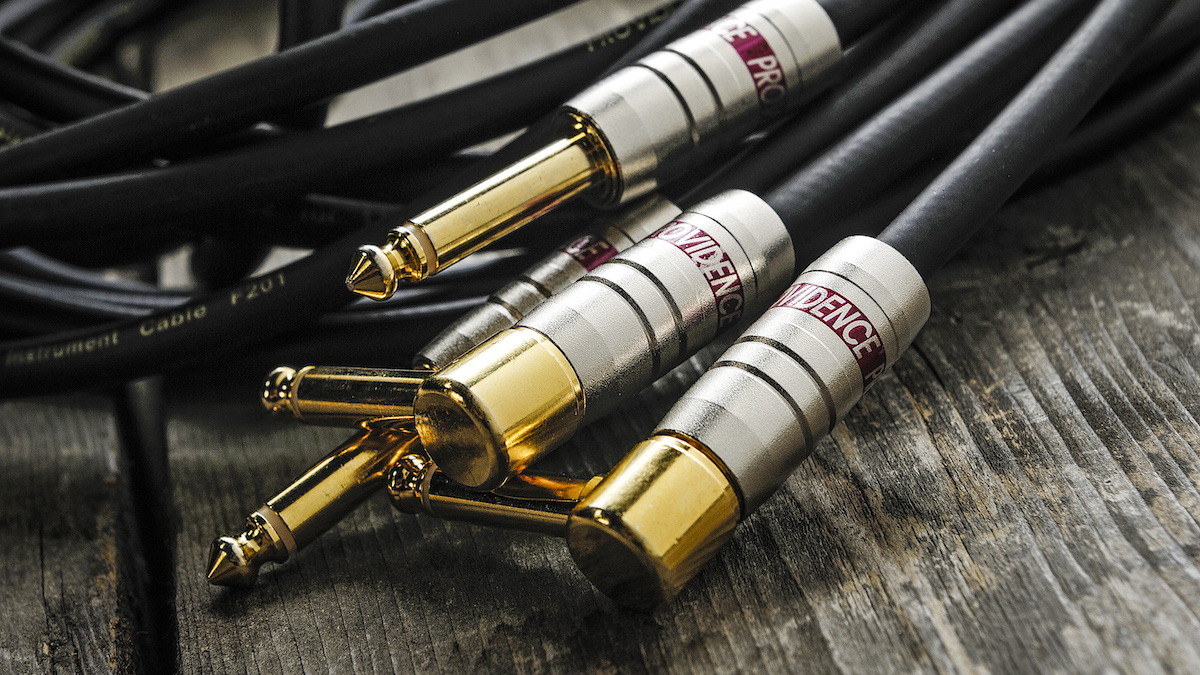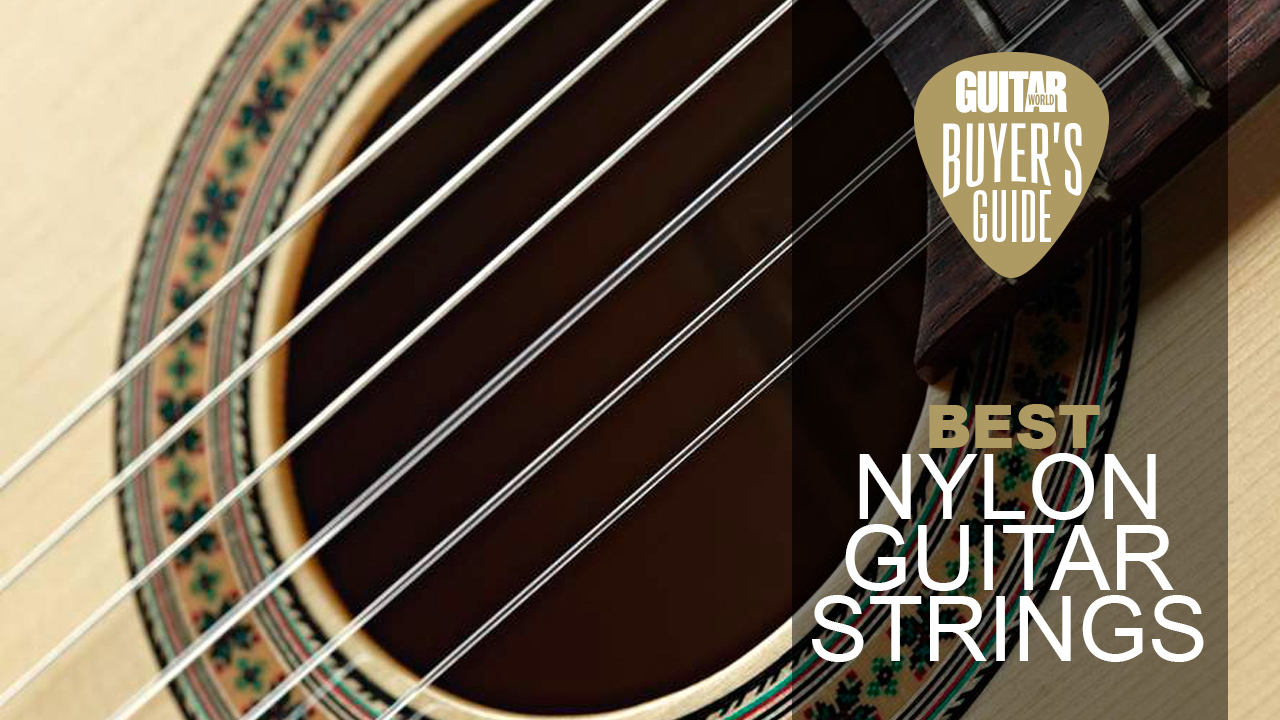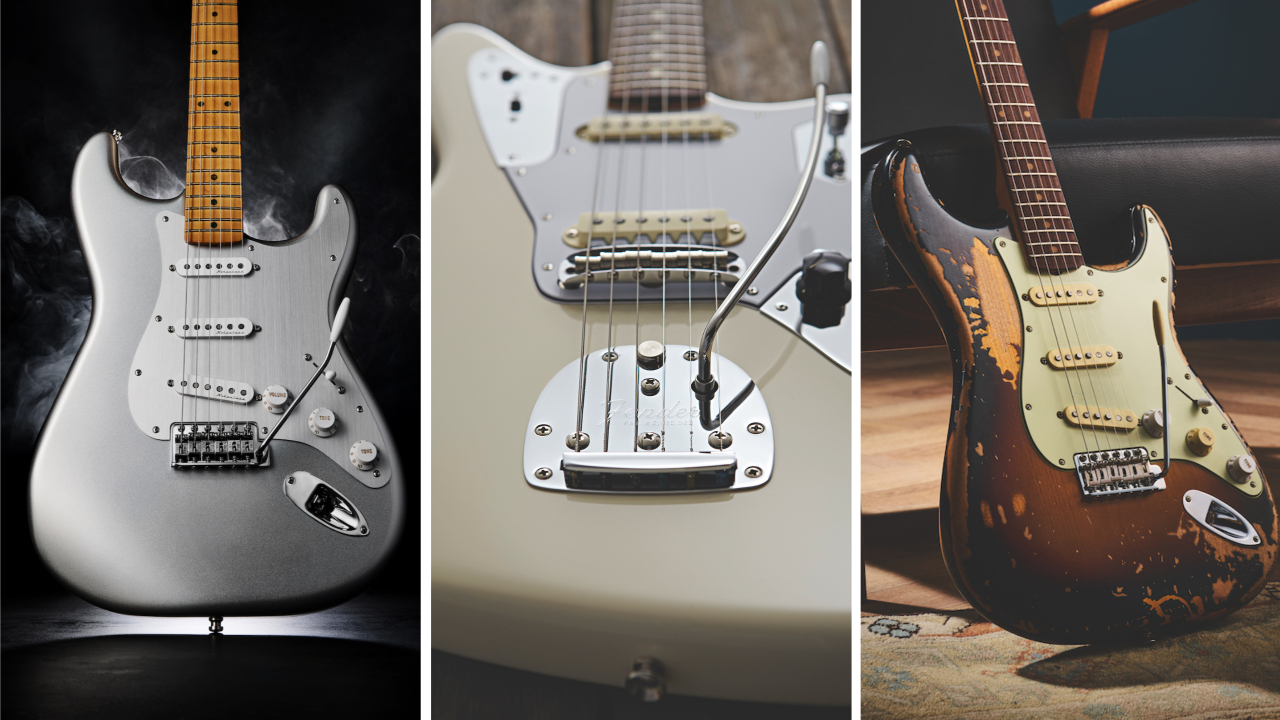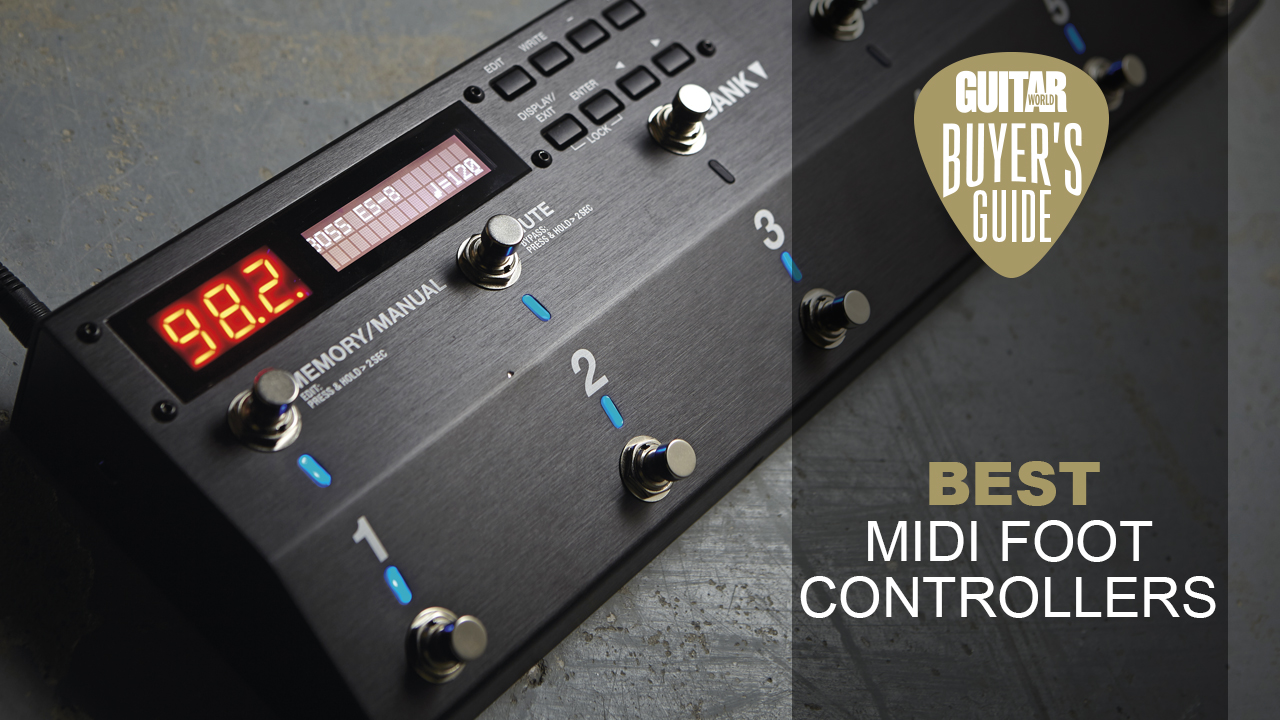Best looper pedals 2025: go it alone with the greatest loop pedals for practice, live performance and jamming
Whether you're writing songs or woodshedding solos, using a loop pedal will make you a better guitarist – these are the best looper pedals from Boss, TC Electronic, Line 6 and more
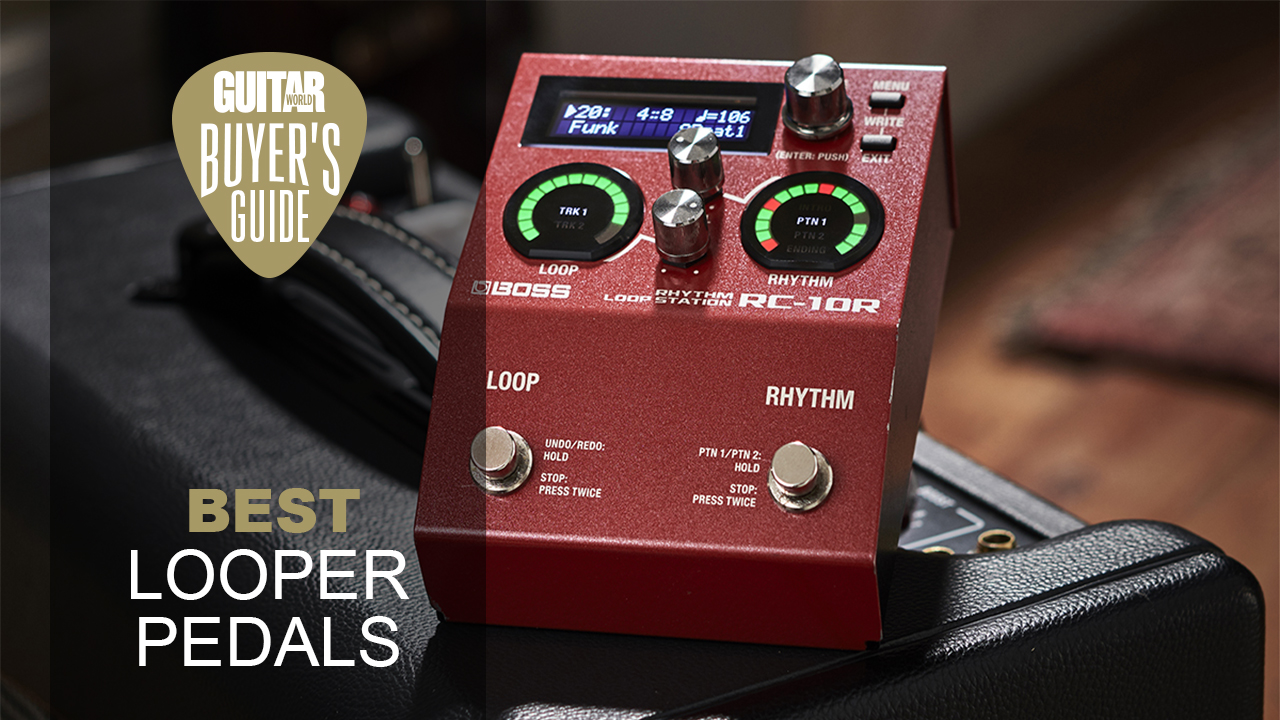
Other than an EQ, the looper is the king of utility pedals, and it will change the way you play. One of the best looper pedals could be directly serving as an audio effect in its own right to create punctuation, pads, layers, and harmonies, or it could be used as a performance tool, allowing you to create and layer additional parts using multiple instruments.
Loopers can also be a powerful practice aid, allowing you to play over your parts and take your solo phrasing or technical playing to the next level. It could even result in you no longer putting off an awkward conversation about creative direction with your band members. Maybe it is solo project time, after all!
Though more guitarists than ever have access to a DAW for composition, arrangement, and practice, there's still a lot going for a loop pedal. The first is price. While DAWs are accessible, they require a powerful computer. Mobile phone and tablet solutions have come a long way, but generally, a laptop is the best platform. Second, a stand-alone pedal has a much gentler learning curve than a DAW.
The third is the form factor. Pedals are smaller, more convenient, and more tactile. Especially for a guitarist, looper pedals drop you into a feedback loop where you can get lost in creative flow, something that can be elusive when working 'in the box.'
Finally, they're not just for guitar; many have multiple inputs, meaning you can set up a guitar, keys, or even vocals as sources. If you are planning on going the one-person band route, then your practice setup could be the same as your gig rig. Particularly if you plan on using more complex looping, you'll need to practice not just your musical parts but also the sequencing and timing of your loops, too.
Still, with so many options available, it can be daunting to choose the right one. That's why we've put together this list of the best looper pedals on offer today.
Best looper pedals: The quick list
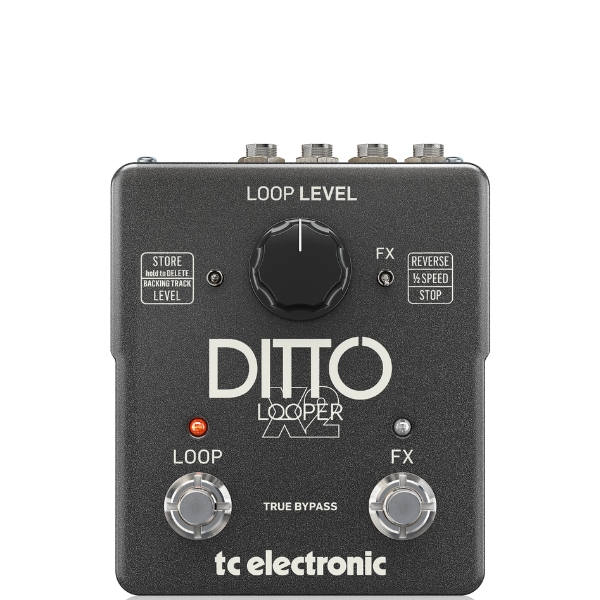
One of the most popular looper pedals on the planet, the TC Electronic Ditto X2 is easy for beginners to pick up whilst still providing serious depth for more experienced players.
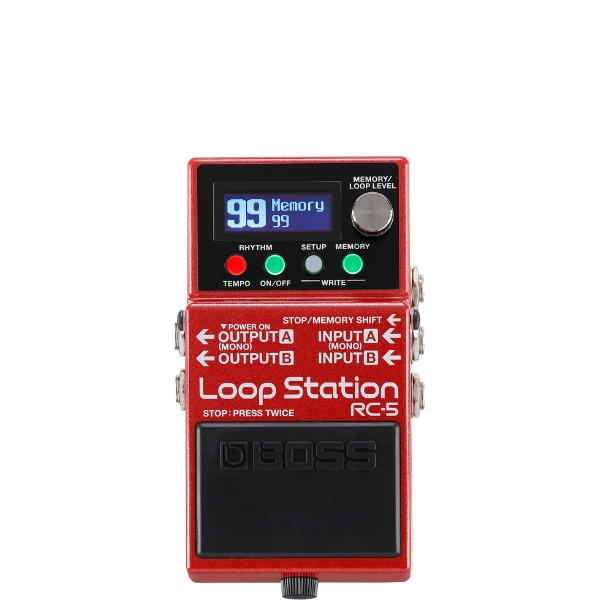
For simple, single-button operation it doesn't get much better than the Boss RC-5. Jam-packed with features, this is a powerful looper despite its simple looks.
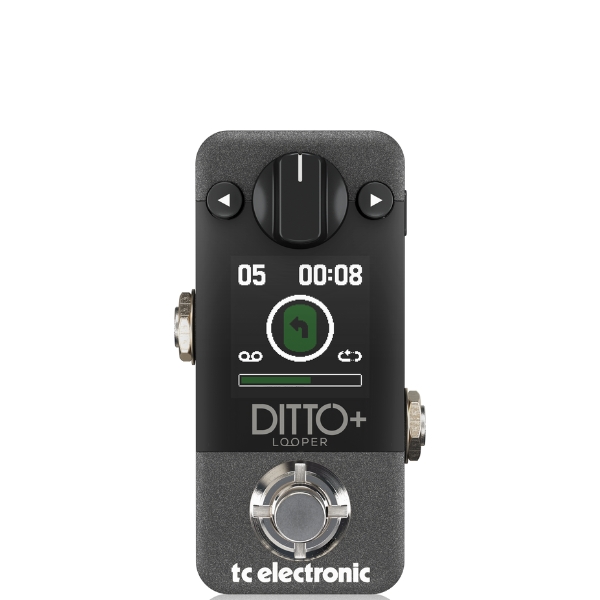
Simple, yet incredibly effective, the TC Electronic Ditto+ gives you a lot of looping for your money, plus a super useful screen for added functionality.
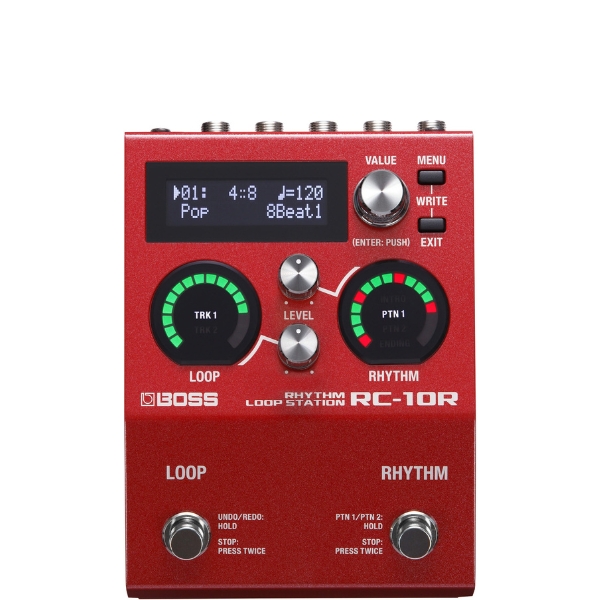
Taking the popular Boss format for a looper, the RC-10R adds 280 rhythms over a huge range of musical genre, allowing you to enhance songwriting or perform live without a backing band.
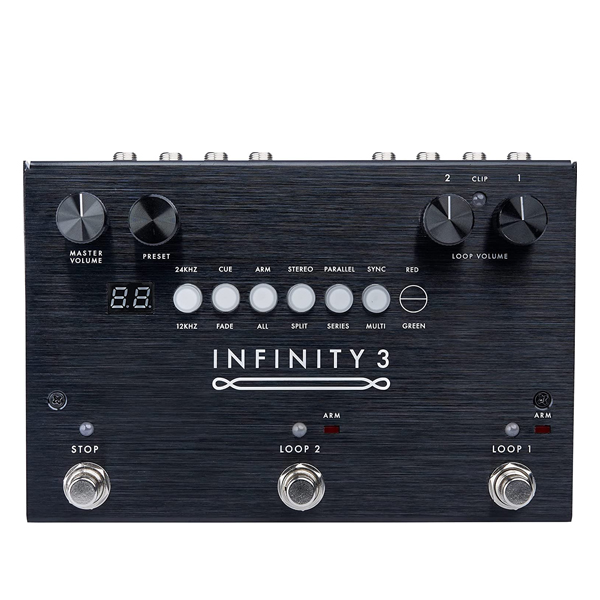
If you need multiple loops the Pigtronix Infinity Looper will scratch that itch. It's also got a massive 256 overdubs per loop, offering truly unbounded looping.
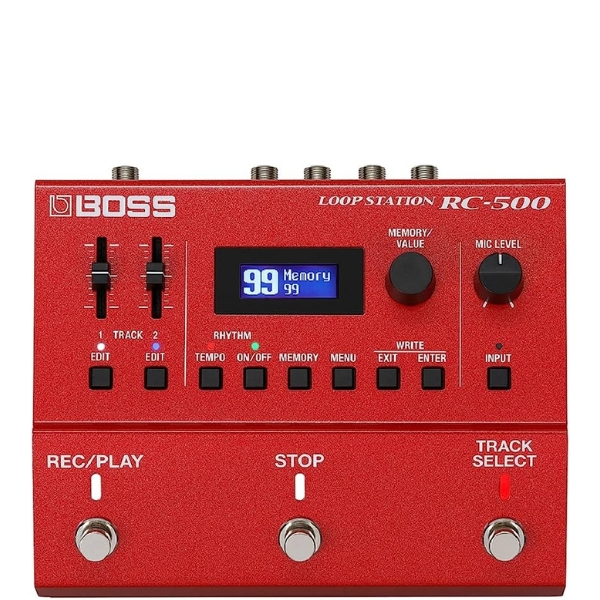
If you want to make looping a staple of your live performances and songwriting, then the in-depth options offered by the Boss RC-500 make it a perfect partner.
Best overall looper
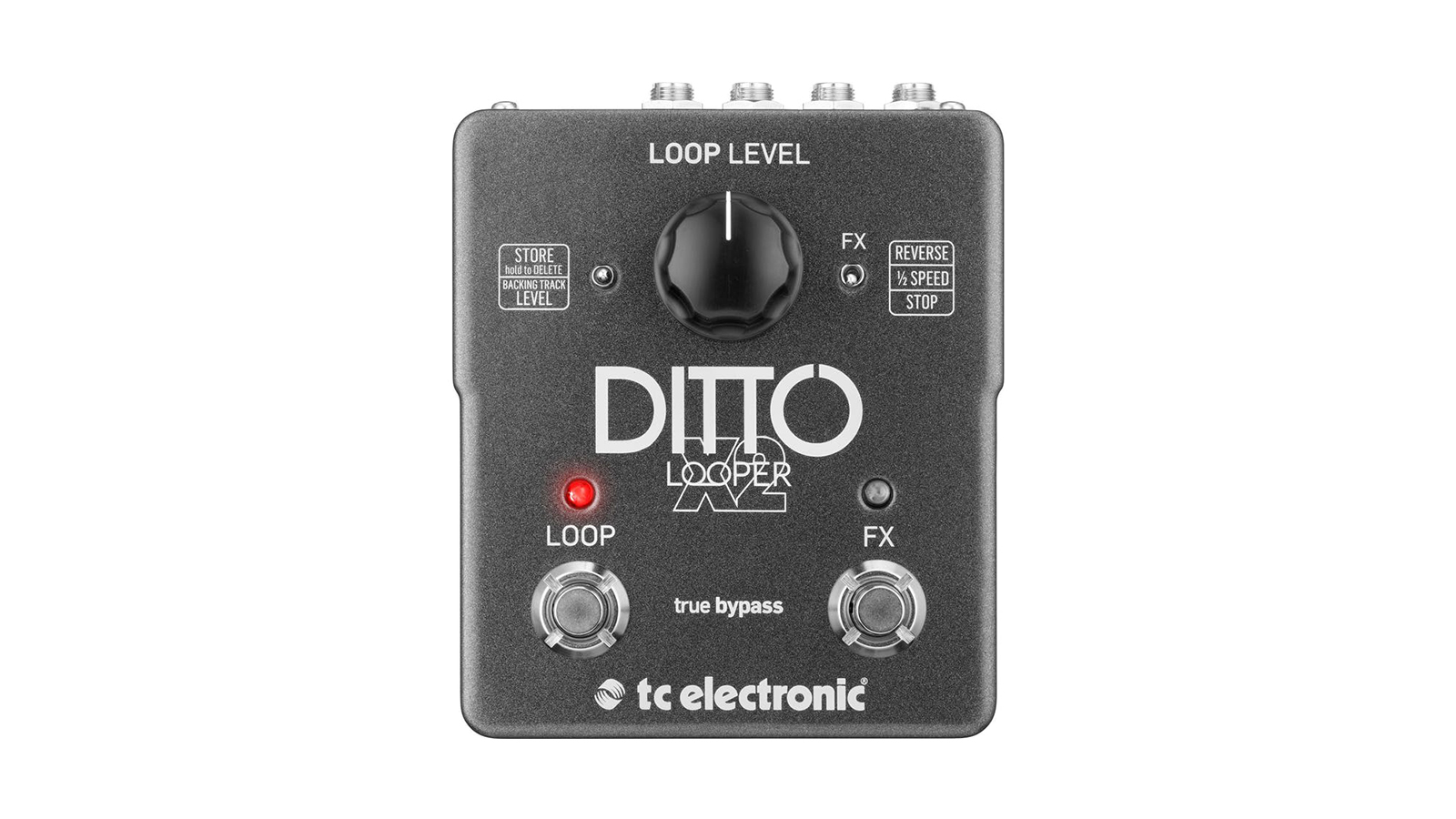
Specifications
Reasons to buy
Reasons to avoid
The TC Electronic Ditto X2 is still incredibly popular as an entry-level looper pedal, and the truism with groceries applies to TC's looper line: if you go one above the cheapest, you get the best value.
So it goes with the Ditto X2. Incredibly simple on the front panel, there's a single control for the loop volume, then it's one tap to record, one to play, and there's a dedicated stop button.
There are two effect modes too, which offer reversed playback and half-time playback of your loops, stereo I/O, and the ability to load and save loops via USB. Simple, but we found it to be highly effective and lots of fun to use, which is why it's our current top pick for best looper pedals.
Because the X2 is so popular, it can sometimes be hard to get hold of. In this case, take a look at the Ditto X2 Jam – it’s only a bit more expensive and it’s essentially the same pedal, but with the company's BeatSense technology on board. This features a built-in microphone that will actually listen out when you’re playing with other musicians, and correct the timing of the loop to match them – clever stuff!

"For live use, a looper with a dedicated stop button is essential. The Ditto is solid, intuitive and straightforward to use, even on a dark stage." Read our full TC Electronic Ditto X2 review
Best one button
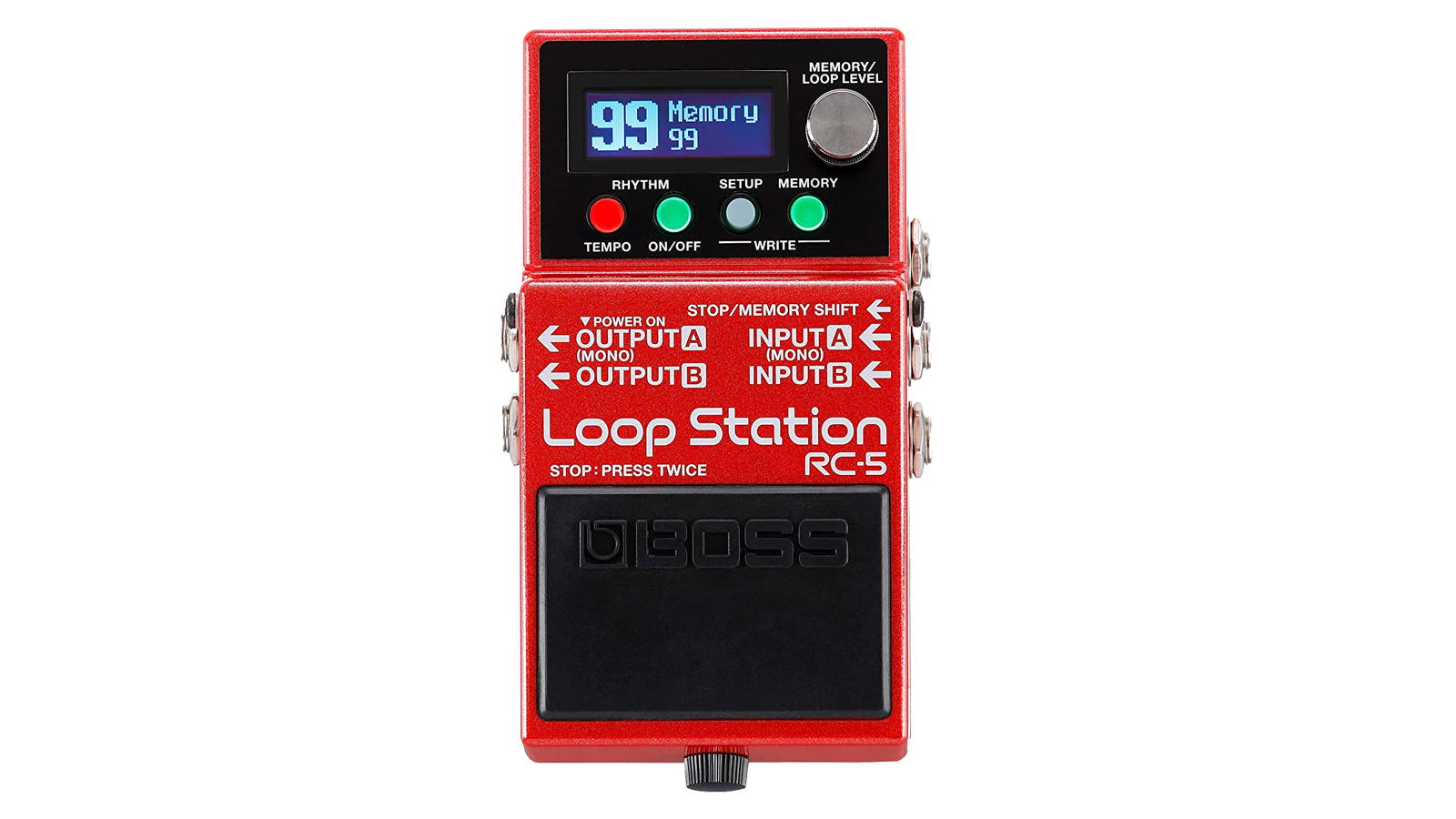
Specifications
Reasons to buy
Reasons to avoid
Boss is a trusted name in looper pedals, and with the RC-5, the company has absolutely nailed the compact pedal formula. For some, a looper pedal is only there to loop chords to jam over at home, and for others it’s to create a one-person band atmosphere – two very different tasks that we found the RC-5 does with ease.
Onboard, there’s memory for 99 separate looping compositions, which tallies up to a staggering 13 hours worth of memory. Each track can last up to one-and-a-half hours (for those of you with one-person instrumental doom projects, we’d assume), and the new 32-bit processing helps the RC-5 sit head and shoulders above other loopers of this size. If you’re someone who layers many loops on top of one another, this is going to come in handy indeed.
57 in-built drum grooves are the icing on the looper pedal cake here – allowing you home players to jam along until the cows come home. There are two variations for each groove, as well as customized patterns and seven kit types to choose from, making the RC-5 significantly more convenient (and significantly less annoying) than an actual human drummer. We jest, but at least the RC-5 won’t spend all its money on beer.

"Big on features but typically compact, the RC-5 is a powerful practice, writing and performance tool that is ideal for soloists and a very cool addition to any player's pedalboard." Read the full Boss RC-5 Loop Station review
Best value looper
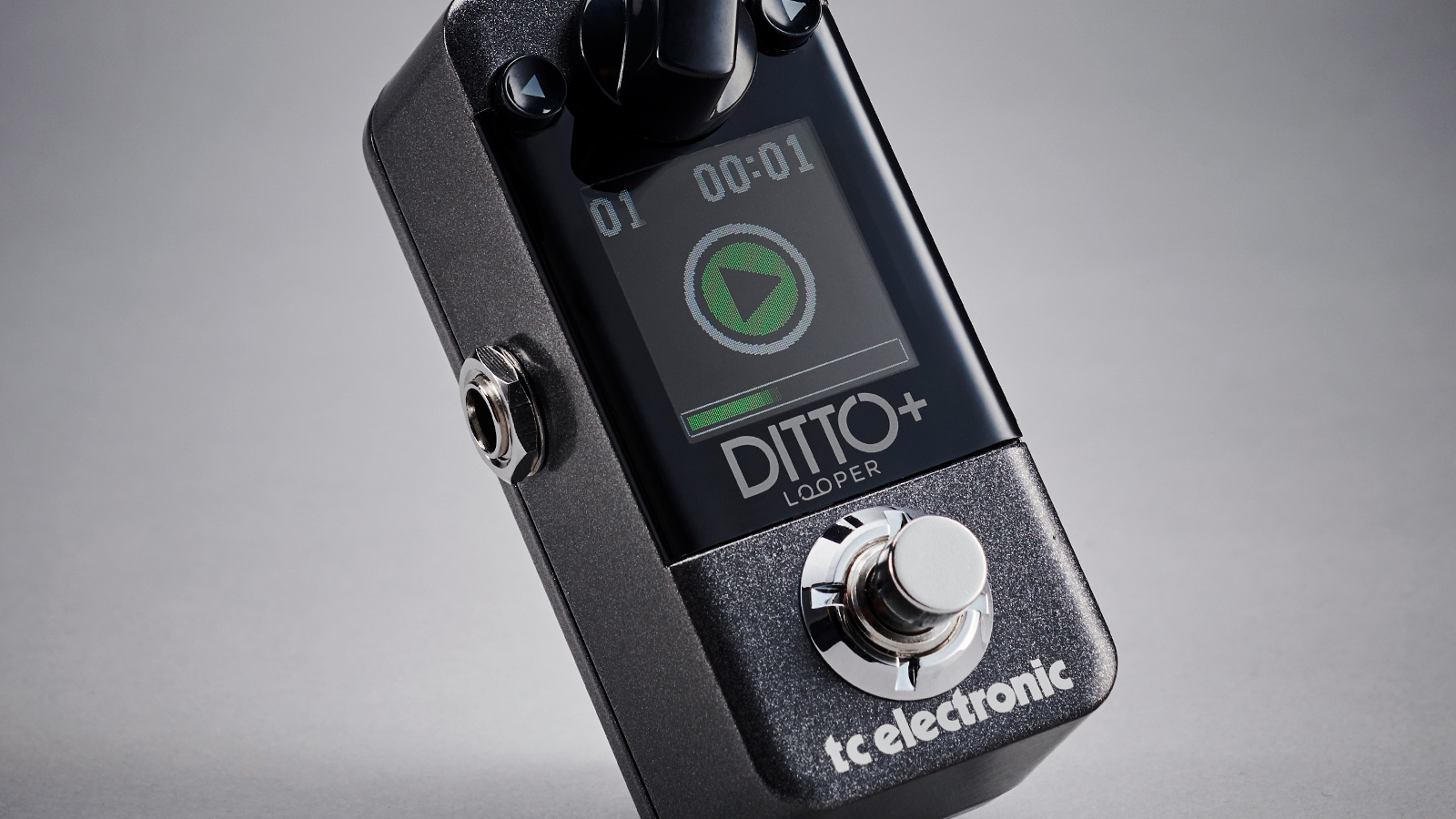
Specifications
Reasons to buy
Reasons to avoid
The simple-but-effective TC Electronic Ditto was a pedalboard staple, both for live use and for writing at home or in a practice room. Although it lacked a dedicated stop control, halting a loop was relatively foolproof, and crucially the pedal's form-factor was small. It was also a brilliant cheap looper pedal, so this meant that one or more could be snuck onto even the tightest of 'boards.
TC's new Ditto+ packs in all the things that made the Ditto great – sound quality, price, form factor, intuitive design – and adds a large screen. We're not massive fans of screens on pedals of this size, but in the case of the +, it does unlock extra functionality. The most exciting feature is the ability to stack a longer loop on top of repetitions of a shorter loop.
Whether this is the sort of feature you'd bet the farm on in front of a paying audience is another story, but it's useful for songwriting sessions.

"Despite the mini-pedal form, this is a powerful looper with an hour's worth of 24-bit looping time and the ability to upload backing tracks. Plus, it's easy to use. What's not to like?" Read the full TC Electronic Ditto+ review
Best for backing

Specifications
Reasons to buy
Reasons to avoid
The latest in Boss’s Loop Station collection earns the ‘R’ suffix due to its built-in rhythm generator, making it almost like a looper/drum machine hybrid.
Onboard you’ll find 280 preset rhythms covering a host of musical genres and each includes two unique sections (Pattern 1 and Pattern 2) with transition fills and an intro and ending. There’s also storage for 50 imported user rhythms.
In terms of looping functionality, there’s a stereo looper with two independent tracks, six hours of recording time and 99 onboard memories for storing your own phrases.
In our experience, this inspirational pedal is ideal for songwriting and practice, and it’s a capable live tool, too, particularly if you’re a solo act looking to produce a bigger sound on stage.

"Boss has created a truly inspiring and intuitive creative tool – a quasi-hybrid looper-cum-drum machine that could supercharge solo performances or the writing process alike." Read the full Boss RC-10R Rhythm Loop Station review
Best dual looper
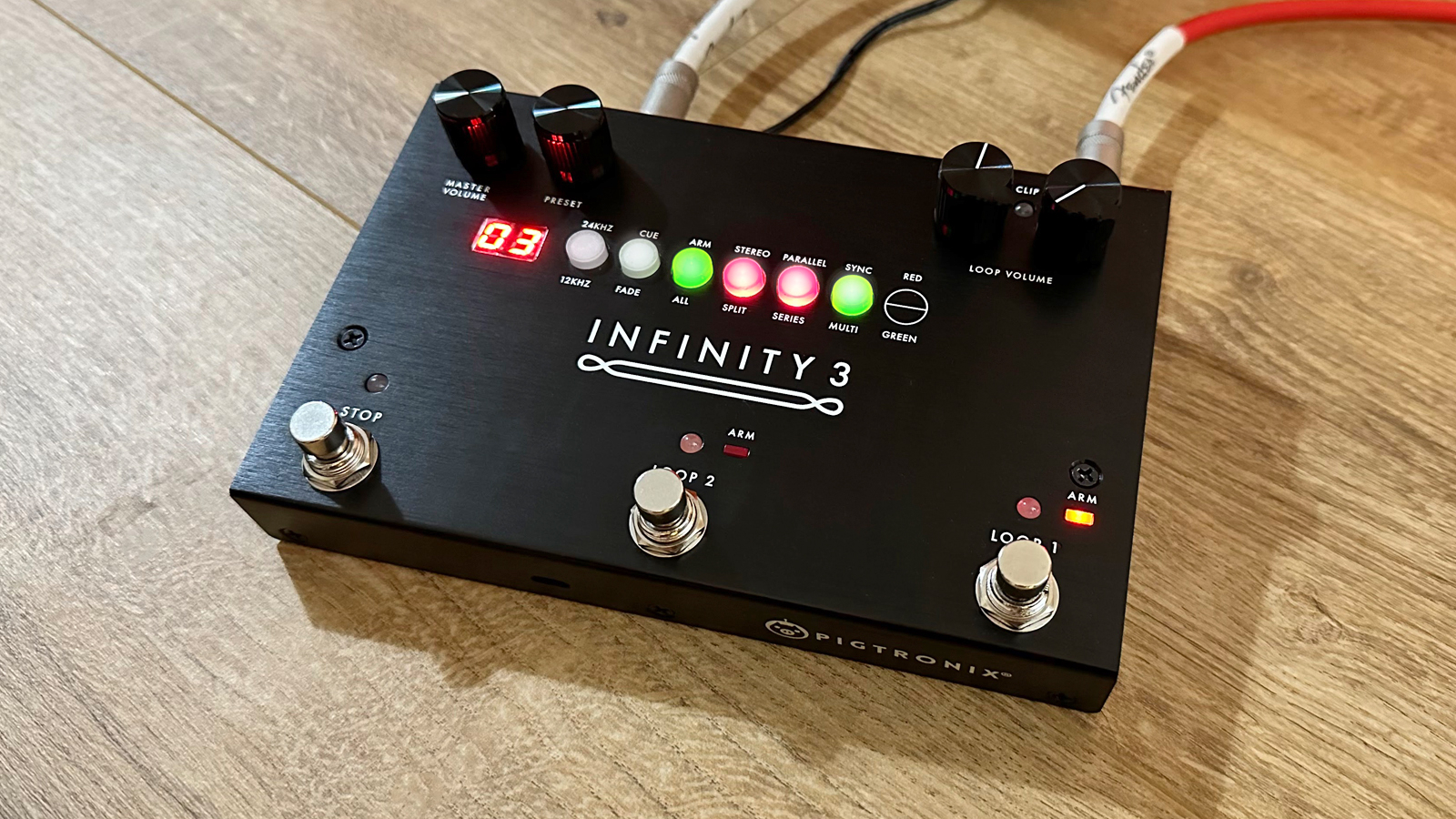
Specifications
Reasons to buy
Reasons to avoid
Though two loops might not sound like much at this price, you can add up to 256 overdubs per loop, and the two loops can be sync'd as well. That synchronization is not only the basic kind; that is to say, the two loops playing for the same length of time, but also making one multiple of the other.
In addition to parallel operation, the loops can be set to series: the one starting after the other for more streamlined transitions between sections in a song.
The Pigtronix Infinity Looper isn't quantized, so you have to be precise in laying down your initial loop. That said, if you're playing over backing tracks you can synchronize the loop with the backing track via MIDI. You can even use it for two guitarists or a guitar and a synth if you're pulling double duty. Do this by separating the stereo inputs and outputs, accessible via a dedicated split mode.
The Infinity Looper features in our best looper pedals guide because it has some useful bells and whistles, too, with a reverse function, variable speed and stutter modes. If you hook up an expression pedal, you can also control the loop aging.

"Infinity 3 is intuitive, looks great and is simple to use, yet has enough complexity to appeal to experienced players alike. Easy to recommend." Read our full Pigtronix Infinity 3 review
Best for gigging
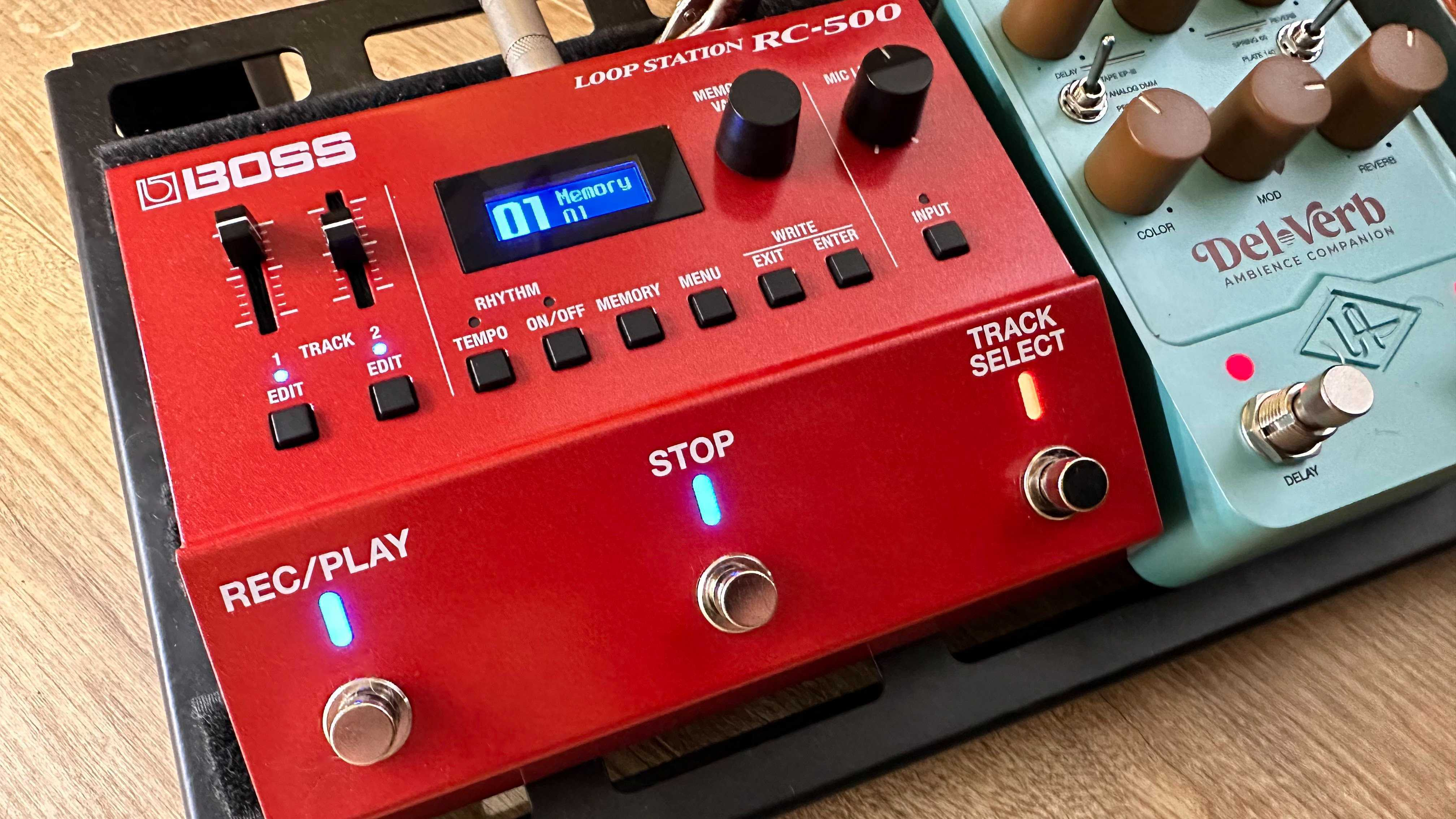
Specifications
Reasons to buy
Reasons to avoid
Yes, this is yet another Boss looper, but when the looping is this good, it’s difficult not to include it. The RC-30 was a staple of the live looping scene, but the RC-500 gives it a modern facelift.
This three-pedal looper is straightforward to use, with the newly added Track Select button making switching between parts a breeze. In addition, the Boss stereo looper engine delivers an impressive 13 hours of recording time – with 32-bit audio quality – meaning you’ll never run out of memory.
Other notable features include both instrument and microphone inputs, stereo outputs and MIDI in/out, studio-quality effects, and in-built rhythms, with 16 different drum kits and 57 preset rhythms. For live guitarists, this is a no-brainer, and will easily satisfy you for an entire set.

"The Boss RC-500 is simple enough for a beginner to get up and running quickly, yet offers excellent advanced features that give anyone upgrading from a smaller/older pedal plenty of reasons to get excited." Read our full Boss RC-500 review
More options...
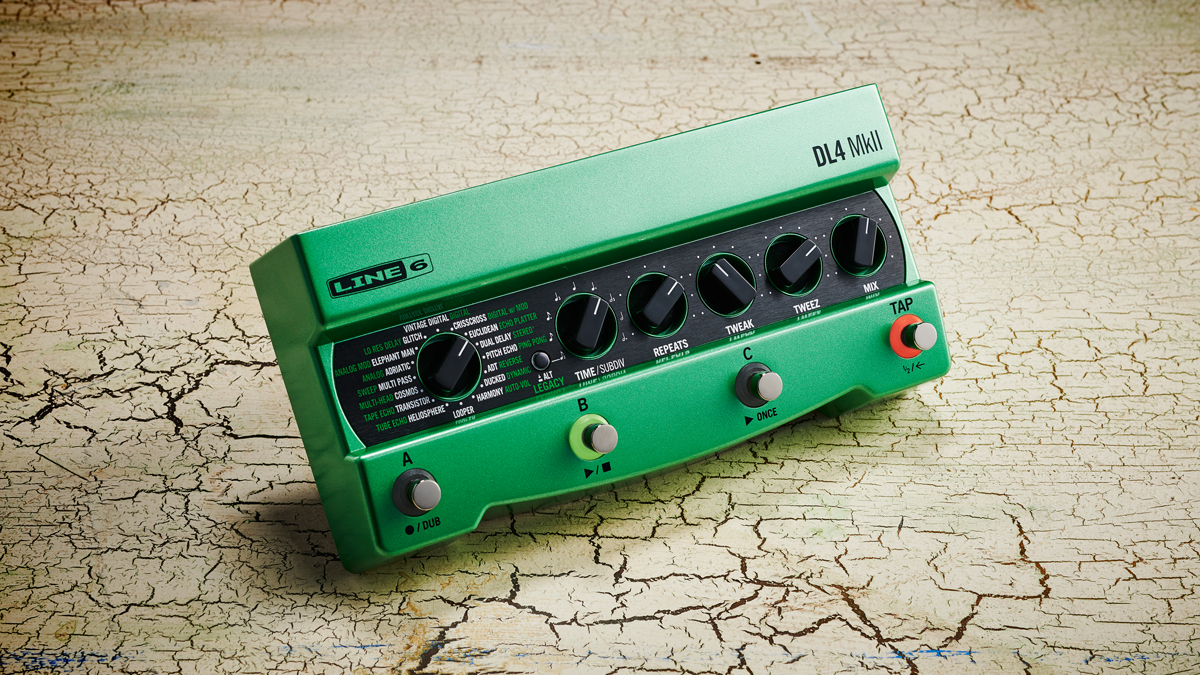
Specifications
Reasons to buy
Reasons to avoid
This new version of the groundbreaking DL4 delay/looper pedal has been given a facelift and it now performs even better as a looper. It’s got an increased 240-second loop time (or 120 seconds in stereo) and offers players the option of either using all four footswitches, or a more simplified one-button loop mode.
The four-button loop mode is really useful for layering up different parts and triggering it at certain times. Having the separate footswitches for starting and stopping recording also means that you’re less likely to get muddled up when performing live.
We love the fact that you can use the DL4 MK2 in the regular delay mode, then activate the one-button looper by holding down the fourth footswitch so you’ve always got quick access to it. There’s even the inclusion of an XLR input so you can loop your vocals (or anything else for that matter) via a microphone.
The Line 6 DL4 MK2 is a seriously well-built pedal – the previous model could be seen on a lot of pro players’ boards, and we reckon this version will be, too. It’s easy to use and it’s super-functional.

"The Line 6 DL4 MKII goes well beyond its predecessor with expanded looping time, a condensed footprint, outstanding new and former delay models, and new reverbs delivered with pristine fidelity." Read the full Line 6 DL4 MK2 review
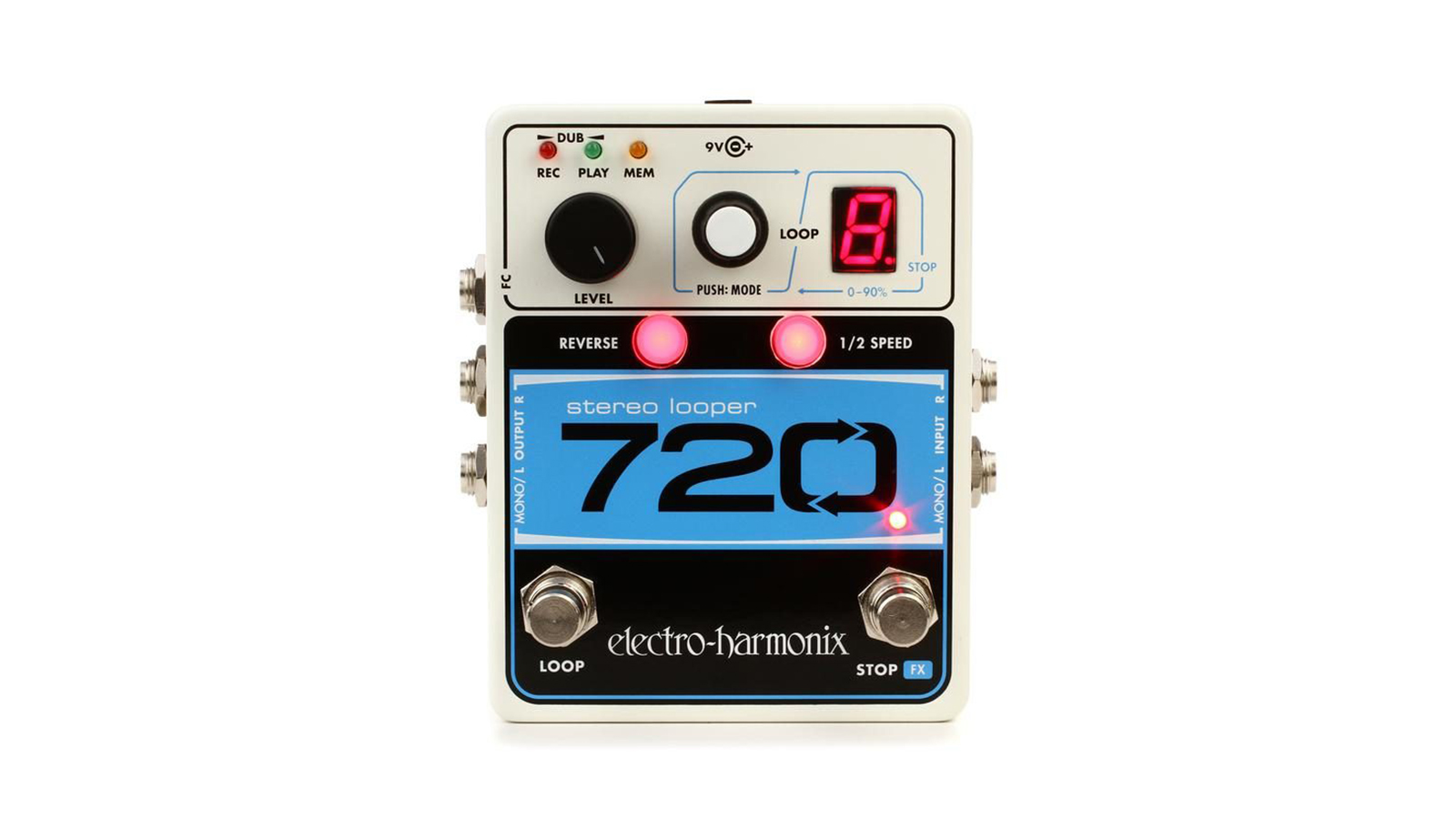
Specifications
Reasons to buy
Reasons to avoid
The Electro-Harmonix 720 is named for the 720 seconds (12 minutes) of loops that it can store across 10 dedicated loops. Although scrolling between these on the fly live is definitely in the 'flying by the seat of your pants' camp, you can attach an external three-button footswitch to access the undo/redo functionality and the bank up/down controls.
In our opinion, it's better to have the banking controlled by the knob, leaving the two footswitches free to act as dedicated start and stop controls. Like the TC Electronic Ditto X2, the Electro-Harmonix 720 Stereo Looper Pedal offers some effects as well, with reverse and half-time modes. It also has a loop fadeout mode that – as you might expect – will gradually fade a repeating loop out.

"There are more fully-featured loopers on the market, but as an easy-to-use, no-frills tool that will help with both practice and performance, the EHX 720 is a solid choice." Read our full Electro-Harmonix 720 Stereo Looper review
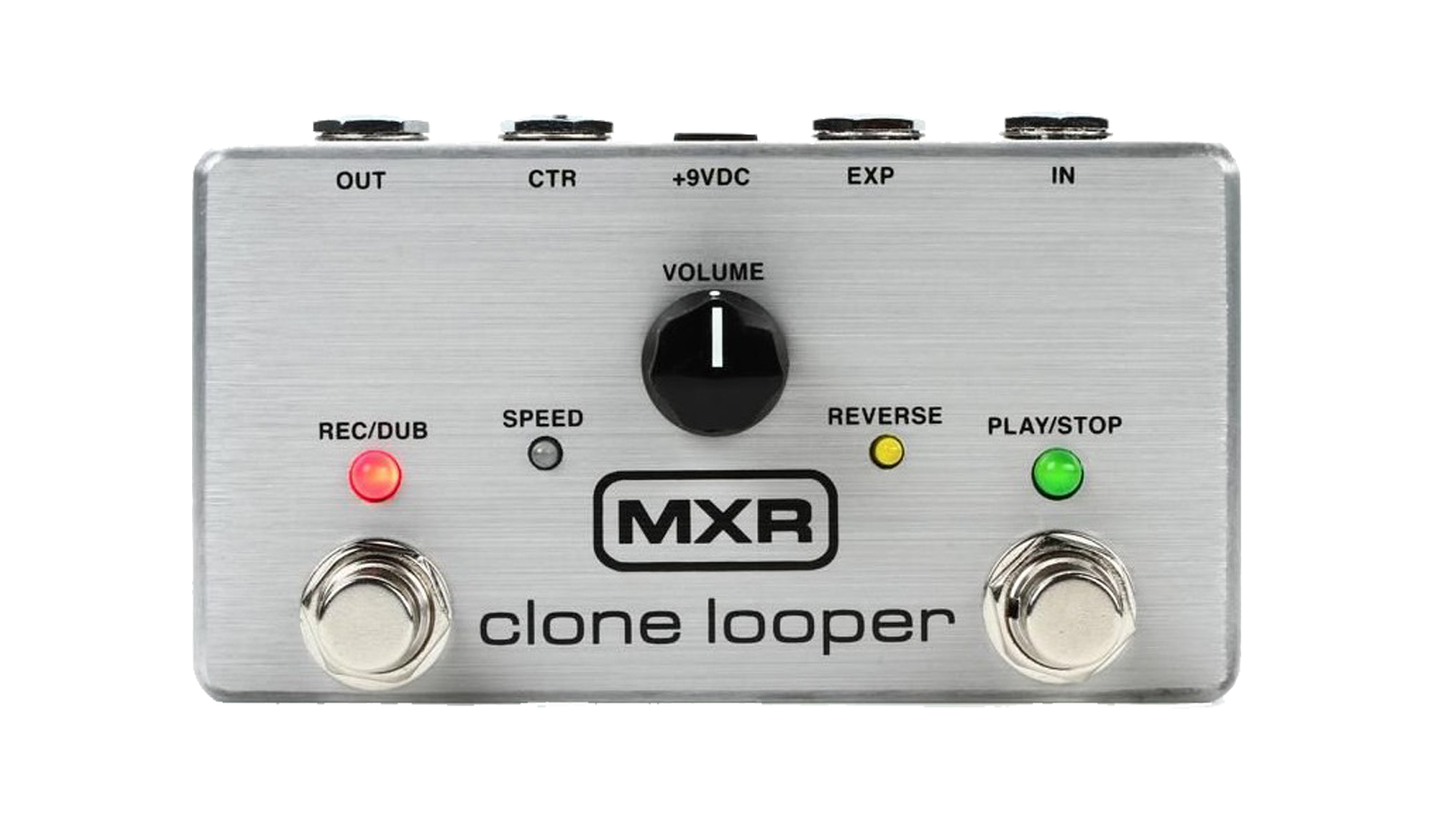
Specifications
Reasons to buy
Reasons to avoid
The MXR looper crams a lot of functionality into a relatively compact pedal. With six minutes’ loop time and unlimited overdubs, you’ve got a pretty big blank canvas to play with. It’s also worth noting the very high sound quality produced by this unit – 88.2kHz operation means that you’ll get little to no perceivable sound degradation, so your precious tone stays intact.
Its double footswitch design means there are separate switches for recording/overdubbing and playing and stopping the loops, so it’s great for live use. The lights are useful, too, letting you know when you’re at the start of your loop and when you’re recording, plus you’ve got reverse and speed-altering options.
There’s also a lot more hidden under the hood of this pedal when you add in external footswitches and expression pedals. The Clone Looper lets you delete the last overdub with a simple press and holding of the Rec/Dub footswitch – ideal for trying out different parts in the songwriting process.
It’s compact, built like a tank and performs really well – one of the best loopers around for a multitude of different players.

"Combining all the necessary layering facilities with a few creative extras in a compact footprint, MXR’s pedal offers practicality at a decent price for anyone who wants a looper in their locker." Read the full MXR M303 Clone Looper review
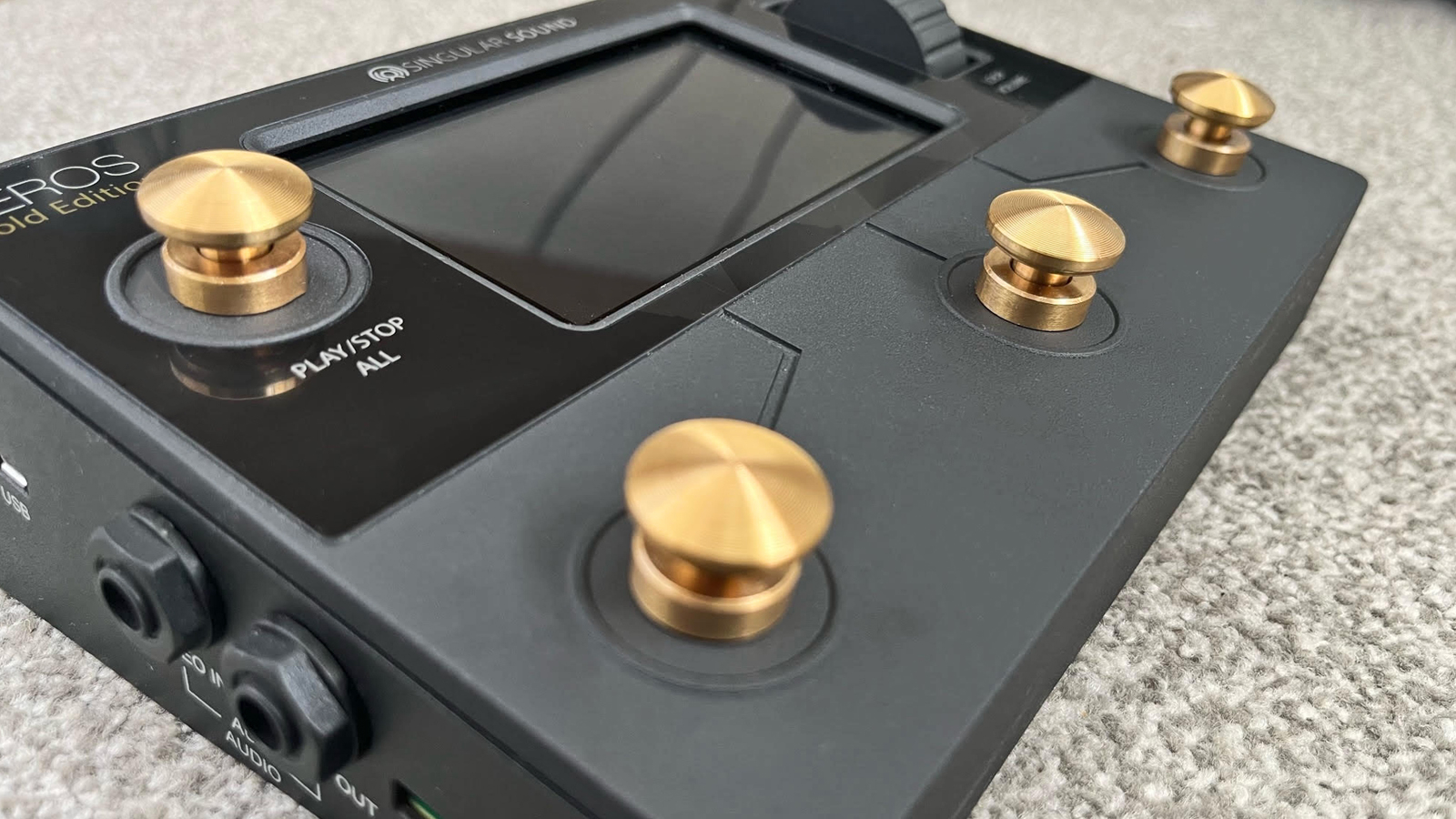
Specifications
Reasons to buy
Reasons to avoid
One of the most advanced looper pedals you can get your hands on, the Aeros is so packed with features, it blurs the line between looper and DAW.
Chief among its feature set is a 4.3” touchscreen, as well as Wi-Fi and Bluetooth connectivity, expression pedal support and SD card compatibility. Perhaps most impressive is the ability to create a ridonkulous 36 loops per song – with unlimited overdubs per loop – making this a solo loop performer’s dream.
Those 36 loops are divvied up into six song parts, each with six loops layered over each other as parallel loops. Once you've put your performance together, you can export the entire track. There's also integration with Singular Sound's flagship product, the BeatBuddy drum machine, for fully fledged rhythmic backing.
It goes without saying that you have to be pretty serious about looping to consider the Aeros – but few units can match its mind-boggling feature set.

"This is an excellent looper pedal and despite its functionality, is relatively easy to use. It does take some getting used to and can be a little daunting at first, but the more time you spend with it, the better it gets and the more you'll be able to do with it. We loved being able to customize all the settings and the routing options make it ideal for pretty much any setup going." Read our full Singular Sound looper pedal review

Specifications
Reasons to buy
Reasons to avoid
Yes, another Boss pedal, but the Japanese effects giant really does have it down when it comes to making the best looper pedals. The RC-1 is its entry-level looper, so it’s super-easy to use, and would perfectly suit someone just starting out with looping. The single footswitch controls all your stop/starting and overdubs, while the knob above lets you set your loop level. There’s also a really handy LED circle that shows you whereabouts in the cycle your loop is.
With a 12-minute loop limit, you probably won’t find yourself running out of time – that’s plenty to get song parts and ideas tracked, plus you’ve got unlimited overdubs. The stereo inputs and outputs let you hook up stereo effects pedals, or synths and other instruments – it’s not just for guitar!

"The Boss RC-1 Loop Station is a really easy-to-use looper pedal with great functionality, 12 minutes record time, stereo ins and outs, and superb build quality. This pedal is perfect for simple looping in a live performance setting or for writing." Read our full Boss RC-1 Loop Station review
FAQs
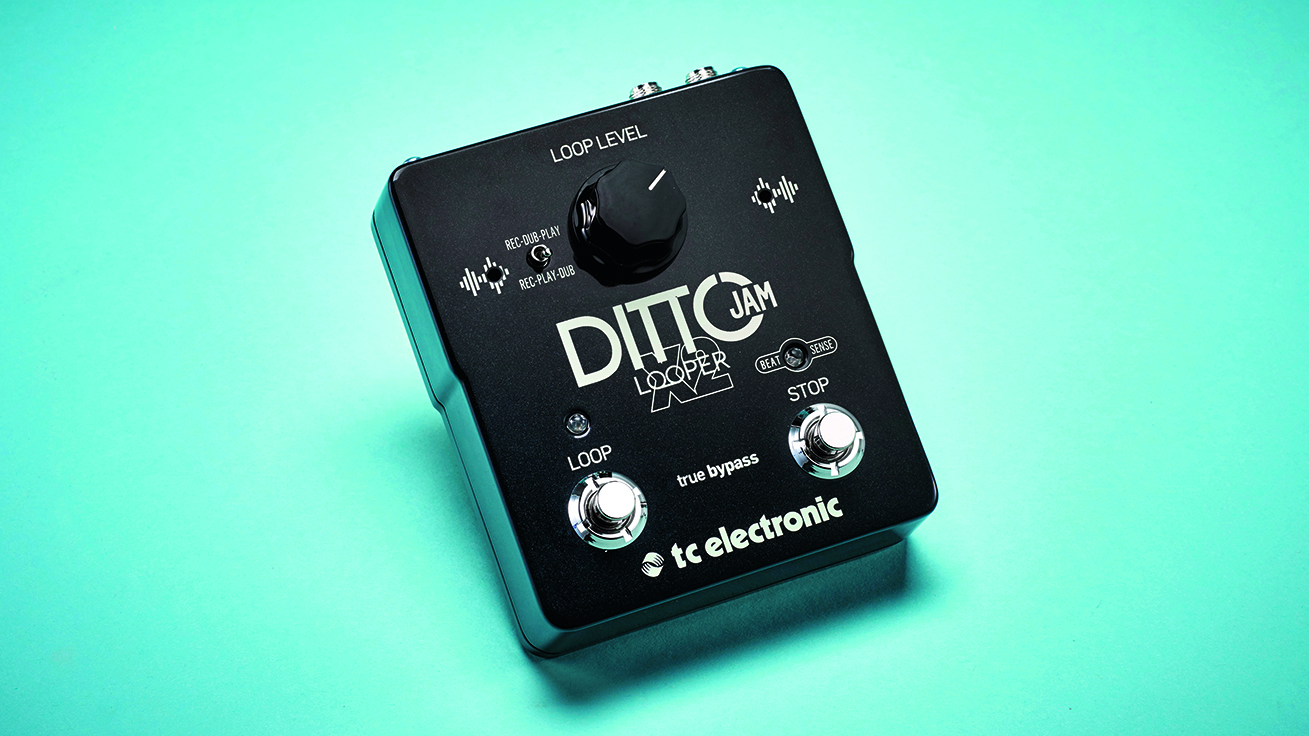
How do looper pedals work?
Looper pedals record a chunk, or 'buffer' of audio, that can be played back on demand and over and over again. They were originally developed as an additional function of digital delay units. If you don't decrease the volume of digital delay repeats, you have a rudimentary looper. Most loop pedals come in single or double-footswitch form factors, where one switch controls capture and playback, and the other stops playback. Many also offer additional effect modes.
What can I use a looper pedal for?
Looper pedals are generally used for one of three things:
Songwriting: While working up an idea, it pays to be able to record it and be able to hear it back. Sometimes that's just to realise the riff wasn't as good as you initially thought, and other times it's to catch a wave of inspiration and come up with additional parts, such as solos, melodies or harmonies. Whether working at home or with others, having a loop pedal around during songwriting sessions can be invaluable. Some loopers have the ability to save a loop and export it later – a function that can be incredibly useful if you use your looper as a songwriting aid.
Jamming: Not every riff has to be a song, and if you're just jamming some tunes at the end of a long day, a looper can allow you to lay down a rhythm part to play over. In the practice space, even if it's only playing some blues licks, it's fun to have a way to set some chords up as a vamp to get a mood going, and it will really up your improvisation skills.
Live: Some players, particularly in bands with only one guitarist, use occasional live looping to free up space to play lead parts or counter-melodies. Some advanced users even play one-person band shows. They build up entire tracks from just stacked loops, with multiple instruments. For live use where you're stacking multiple loops and playing with a drummer, you may need advanced features. For example, units that can be sync'd with one another, or a MIDI clock, as well as those that have quantization. If you're playing in non-standard time signatures or changing tempo within songs, then the opposite is true. You'll want a non-quantized pedal where you can freely control the loop length.
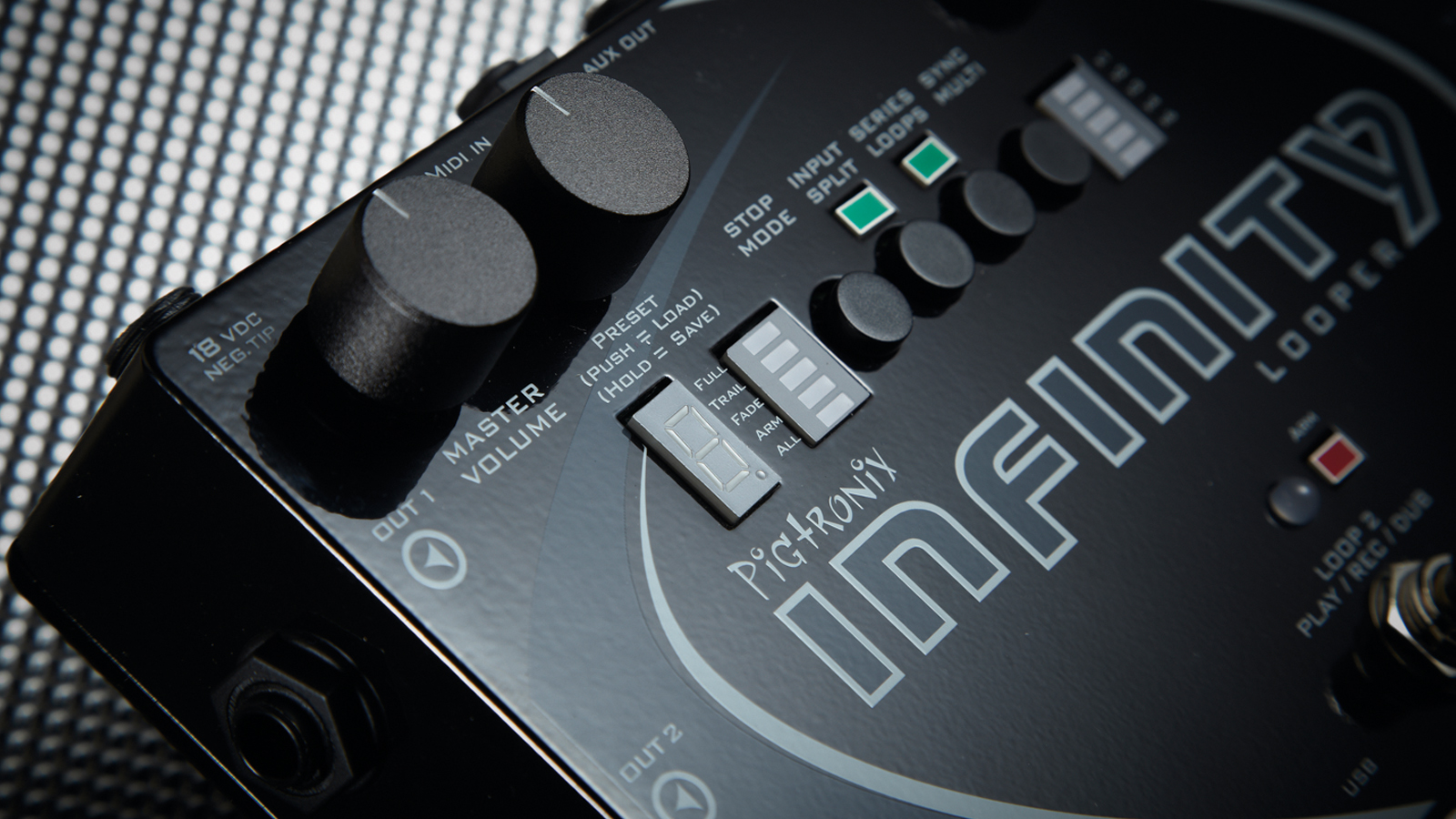
Where do I put a looper pedal in my signal chain?
Many players add a looper onto their pedalboard to capture all the different effects being added. As with any pedal, we’d recommend playing around with the order and seeing what works for you. A lot of players tend to put their looper at the end of their signal chain – that way, all the effects engaged before it will contribute to the sound source that’s being looped. Of course, if there’s a pedal you don’t want to be looped (like delay or reverb), then you could put your looper before that.
Many loopers feature stereo inputs and outputs, too, giving you more options when it comes to fitting it into your rig. You can also try experimenting with the effects loop of an amp. This is especially important if you're using your amp's own overdrive channel – if you run the looper before any overdrive or distortion, your layers will quickly turn to mush. There are loads of options, so always experiment to find out what works best for your needs.
Which brands make the best looper pedals?
Looper pedals are made by a number of different companies, many of which you might recognize. The Boss looper series is probably the most famous – Ed Sheeran used an RC-30 before he got his own looper board custom built for him. TC Electronic also makes an amazing range of looper pedals. You’ll find some great options from the likes of Electro-Harmonix, MXR and more.
How much should I spend on a looper pedal?
You can get a good-quality looper pedal for around the $/£100 mark. At this price point, it will likely feature a single footswitch, so your looping options are more limited, but it still unlocks a whole new world of guitar playing. The more you pay, the more you’ll start to see more features and more footswitches. If your looping needs are fairly basic, then you don’t need to spend hundreds.
How we test the best looper pedals
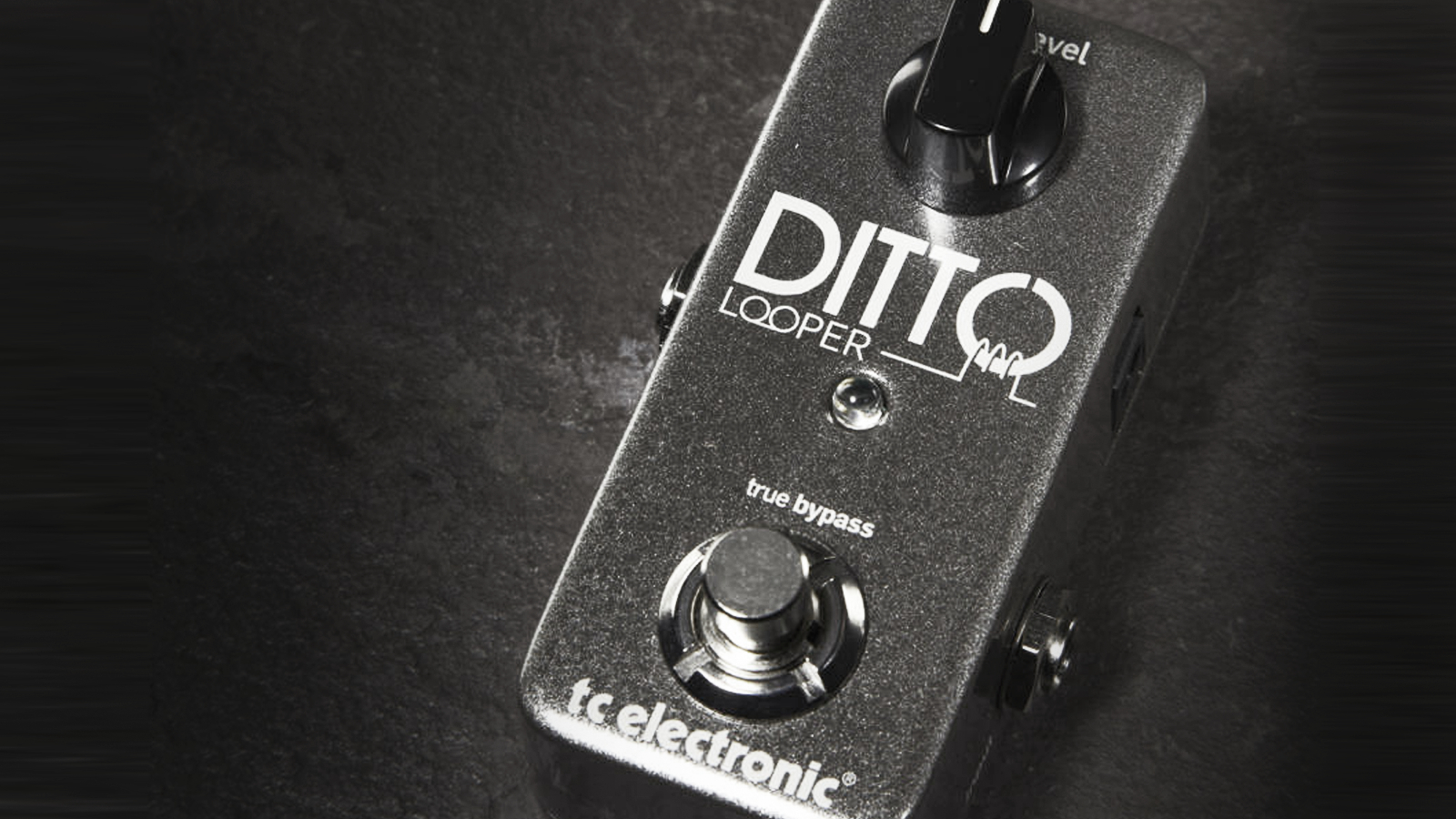
At Guitar World, we're always on the lookout for the coolest gear that adds a touch of magic to our musical creations. As musicians ourselves, we frequently dive into the world of looper pedals to add to our live shows and enhance our practice regimen.
To curate our list of top looper pedals, we've meticulously researched and tested a variety of loopers to find the ones that deliver the ultimate looping experience with style and flair. We combine our real-world experience, meticulous research, and insightful discussions with our editorial team to put together the best looper pedals available today.
Whether you're a budding songwriter, a beat-making maestro, or an experimental sound sculptor, we've got you covered. We've considered factors like loop quality, ease of use, creative features and versatility to ensure that our selection represents the cream of the crop.
Find out more about how we make our recommendations and how we test each of the products in our buyer's guides.
Why trust us?
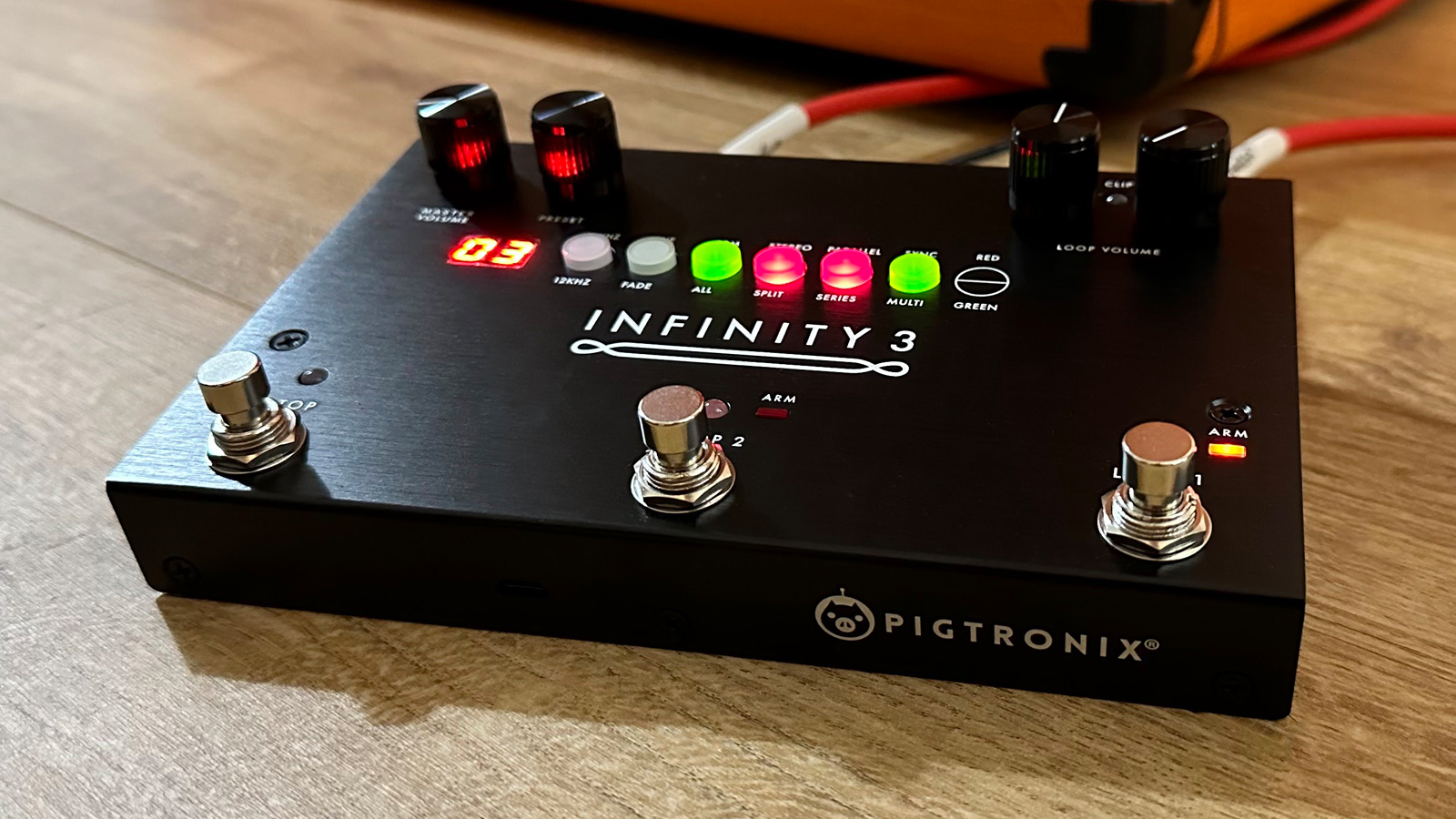
☑️ A global audience of 3.8 million guitarists monthly
☑️ Over 1,20 reviews on GuitarWorld.com
☑️ 30+ years of product testing at Guitar World
Guitar World boasts over 44 years of expertise and stands as the ultimate authority on all things related to guitars. The magazine and website feature expertly written gear round-ups and top-quality, authoritative reviews penned by a team of highly experienced industry professionals.
Guitar World's inaugural print issue hit the shelves in July 1980, and ever since, it has been captivating players and enthusiasts with engaging lessons, insightful interviews with the biggest guitar heroes, and priceless buying advice for newbie players.
Furthermore, GuitarWorld.com continues this legacy online and serves as the hub of the world's foremost authorities on guitar playing. The site not only hosts content from Guitar World but also showcases articles from respected publications such as Guitarist, Total Guitar, Guitar Techniques, and Bass Player. With a reach extending to 3.8 million players each month, GuitarWorld.com is a go-to destination for guitar fanatics globally.
Related buyer's guides
You can trust Guitar World
- Check out the best Tube Screamer clones
- The best guitar tuners to suit all budgets
- Get top-notch sound with the best amps for pedals
- Best guitar cables for acoustic, bass and electric
- Best guitar picks: find the right plectrum for you
- Expand your playing style with the best Boss pedals
Get The Pick Newsletter
All the latest guitar news, interviews, lessons, reviews, deals and more, direct to your inbox!
Alex Lynham is a gear obsessive who's been collecting and building modern and vintage equipment since he got his first Saturday job. Besides reviewing countless pedals for Total Guitar, he's written guides on how to build your first pedal, how to build a tube amp from a kit, and briefly went viral when he released a glitch delay pedal, the Atom Smasher.
- Michael Astley-BrownEditor-in-Chief, GuitarWorld.com
- Matt McCrackenJunior Deals Writer
- Richard Blenkinsop
- Daryl RobertsonSenior Deals Writer
“Our answer to everything players have asked for and more”: Neural DSP’s Nano Cortex had one major drawback – but now it’s been addressed with a huge free firmware update that takes on Kemper and TONEX
"The ability to use this as a midweight MIDI brain for a gigging setup is what makes it unique.": Walrus Audio Canvas Clock review
